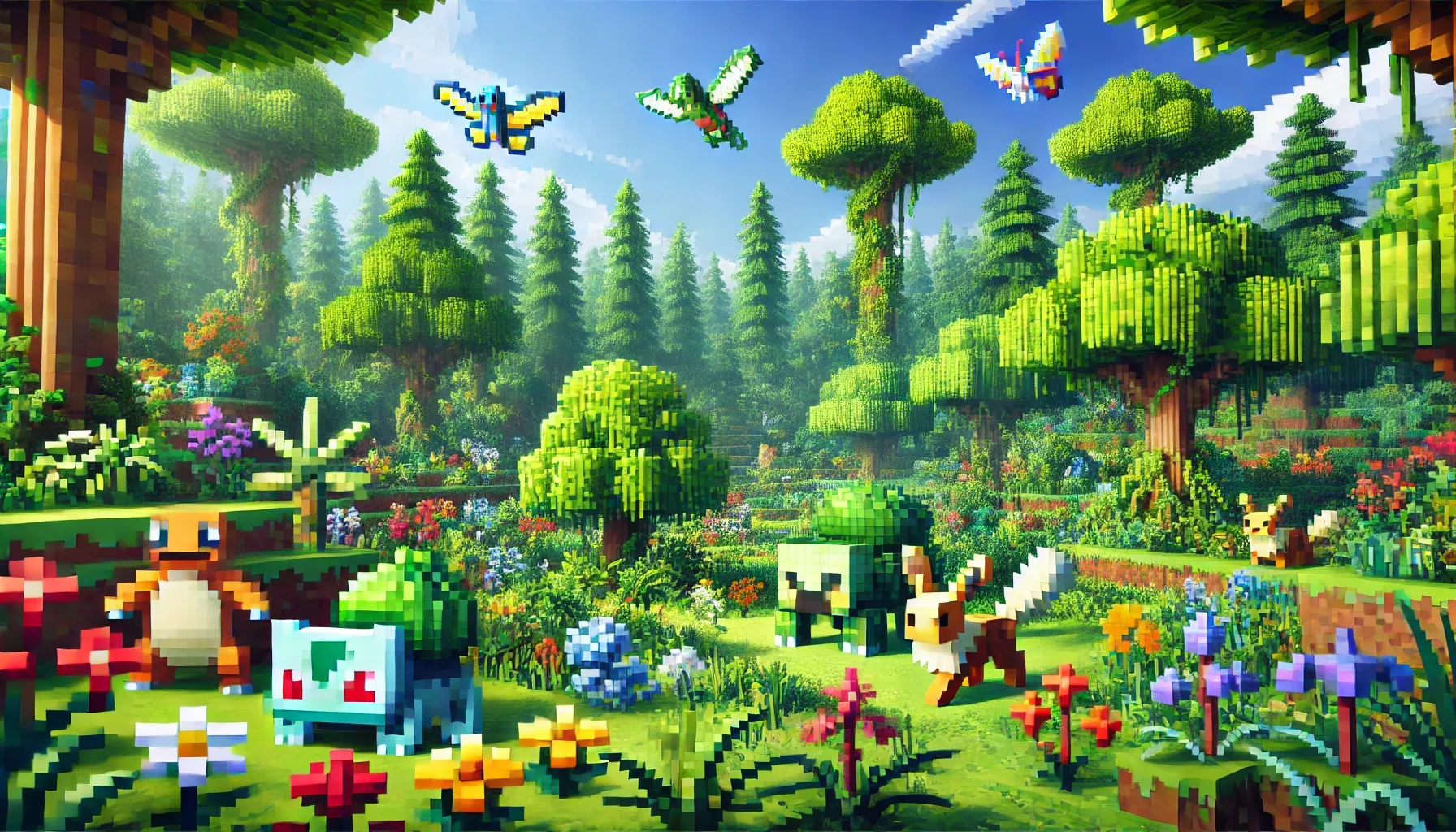Welcome to the ultimate guide on Cobblemon biome spawns! In this guide, we'll explore the various biomes, highlight key Cobblemon that can be found in each, and offer tips for optimizing your hunting strategy.
Forest Biomes
Overview
Forest biomes are lush, green areas filled with trees and vegetation. They are among the most common biomes and offer a variety of Cobblemon.
Key Cobblemon
- Bulbasaur: A grass/poison-type starter Cobblemon, often found wandering in dense forest areas.
- Caterpie: A bug-type Cobblemon, easy to spot on tree trunks and foliage.
- Pidgey: This flying-type Cobblemon can often be seen fluttering between trees.
Tips for Hunting
- Time of Day: Early morning and late afternoon are prime times for spotting forest Cobblemon.
- Berries: Planting berries around your hunting area can attract specific Cobblemon.
Desert Biomes
Overview
Desert biomes are arid, sandy regions with sparse vegetation. These biomes are home to Cobblemon adapted to harsh, dry conditions.
Key Cobblemon
- Sandshrew: A ground-type Cobblemon, usually found burrowing in the sand.
- Trapinch: Another ground-type Cobblemon, often seen near rocky outcrops.
- Cacnea: A grass-type Cobblemon that blends in with cacti.
Tips for Hunting
- Daytime Hunting: Desert Cobblemon are most active during the hottest part of the day.
- Water Sources: Cobblemon are likely to gather around rare desert oases.
Mountain Biomes
Overview
Mountain biomes are characterized by their high elevations and rugged terrain. These biomes are perfect for finding rock and flying-type Cobblemon.
Key Cobblemon
- Geodude: A rock/ground-type Cobblemon commonly found on mountain paths.
- Machop: A fighting-type Cobblemon often spotted training on mountain slopes.
- Zubat: This flying/poison-type Cobblemon prefers dark caves within mountains.
Tips for Hunting
- Cave Exploration: Many mountain Cobblemon are found inside caves; bring torches and supplies.
- Altitude: Higher elevations often yield rarer Cobblemon.
Swamp Biomes
Overview
Swamp biomes are wet, marshy areas teeming with water and plant life. These biomes are ideal for water and poison-type Cobblemon.
Key Cobblemon
- Mudkip: A water-type starter Cobblemon, usually found near water sources.
- Grimer: A poison-type Cobblemon that thrives in polluted areas of the swamp.
- Lotad: A water/grass-type Cobblemon often seen floating on water surfaces.
Tips for Hunting
- Weather: Rainy weather increases the spawn rate of water-type Cobblemon.
- Fishing: Using a fishing rod can help you find aquatic Cobblemon in deeper waters.
Plains Biomes
Overview
Plains biomes are flat, open areas with plenty of grass and flowers. These biomes are home to a variety of Cobblemon, including many normal and grass types.
Key Cobblemon
- Eevee: A normal-type Cobblemon with multiple evolution options, found in grassy areas.
- Tauros: A normal-type Cobblemon that roams the plains.
- Bellsprout: A grass/poison-type Cobblemon often found near flowers.
Tips for Hunting
- Patience: Plains Cobblemon can be spread out, so patience and thorough searching are key.
- Berry Patches: Planting berries can attract specific Cobblemon to your location.
Ocean Biomes
Overview
Ocean biomes consist of vast bodies of water and are ideal for finding water-type Cobblemon.
Key Cobblemon
- Magikarp: A water-type Cobblemon often seen splashing near the surface.
- Tentacool: A water/poison-type Cobblemon that drifts in deeper waters.
- Lapras: A rare water/ice-type Cobblemon sometimes found near coastal areas.
Tips for Hunting
- Boat Travel: Using a boat can help you cover more area and find Cobblemon faster.
- Fishing Rods: Enhance your chances by fishing in different oceanic zones.
Conclusion
By exploring various biomes and using the tips provided, you'll be well-equipped to catch them all. Happy hunting, and don't forget to share your experiences and discoveries with fellow trainers on Cobblemon.GG!



